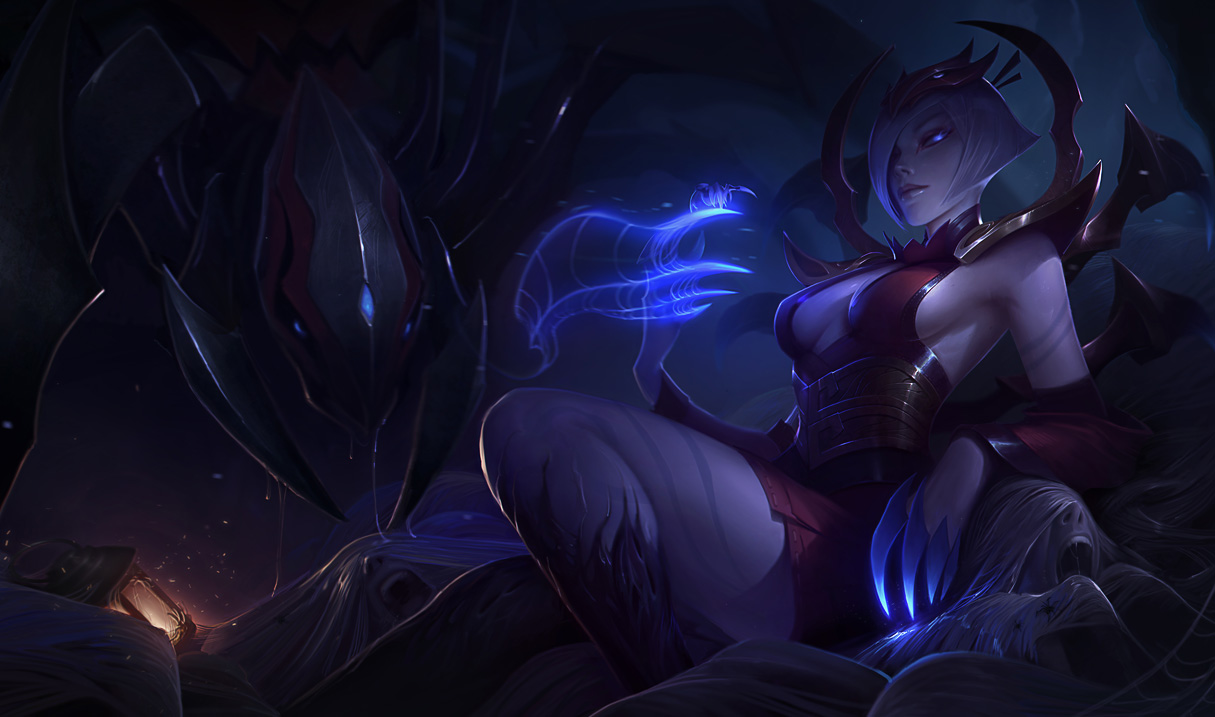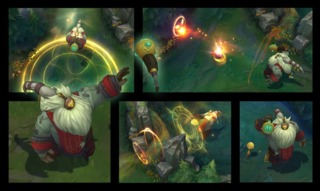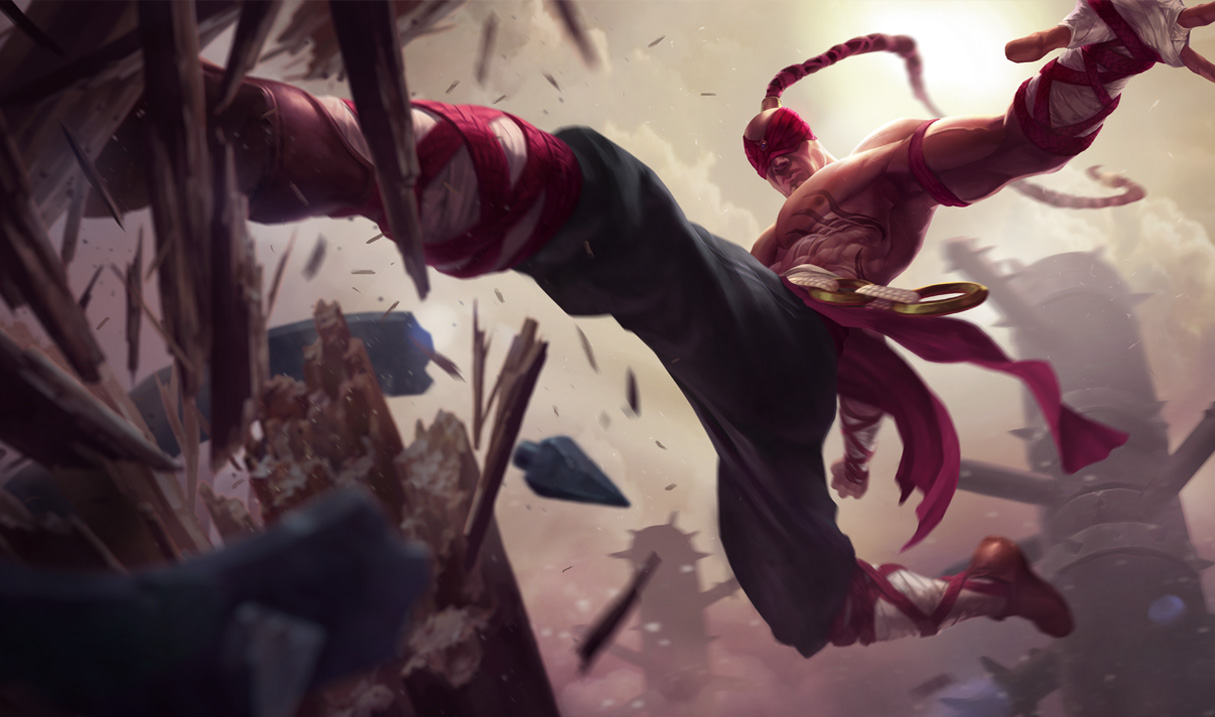Balancing an Esport and Designing the Jungle: An Interview with Morello
Millions of games hang in the balance...
Lead designer at Riot Games Ryan "Morello" Scott took to the stage last week to kick off the first ever esports summit at this year's Game Developer's Conference in San Francisco. His panel, "Building a Sport: The Design Philosophy of League of Legends," outlined the design team's mission of balancing depth and complexity while still maintaining accessibility and fun. Scott pointed out the community's recent disappointment with the current state of the jungle as a prime example of where the design team had more work to do.
As League of Legends continues to evolve, as a game and as an esport, the design team at Riot Games faces the challenge of balancing more than one hundred different champions for its global audience of over ten million, from those who play at a professional level to those who play at a casual level.
I sat down with Scott after his panel to discuss his team's approach to balancing the game and some of the issues they were looking for.
GameSpot: How does the design team follow esports trends? I know you personally have a broader look at things, but how do the designers follow esports and what specifically do they look for?
Ryan Scott: A couple of things we try to do are look at multiple regions. Different people will have different focuses and desires there. For example, some of the guys watch OGN religiously. Some watch NA and EU LCS primarily. Some watch LPL, especially Chun, who's from China, totally fluent in Chinese, and is a challenger player. There's a lot of potential with what the trends are in the LPL.
We self-select a little bit to have variety and if we think there's somewhere that's not being covered, we start to talk about, 'How do we get knowledge there?'. We tend to watch for patterns a lot, as opposed to specifics. For example, in a team fight, if somebody caught this one guy with this one skill, we're not going to analyze that.
Those are just events. What we're looking for are patterns: Why do we continue to see fighters in this area?; Why do we continue to see non-supports roaming in bottom lane? These patterns become interesting because we want to go to the root causes and understand why those things are becoming over or under-attractive.
What sorts of discussions occur when you see one of these trends? For example, Ezreal mid is starting to pop up, or when you see a lot of 2v1s. What kinds of discussions occur when you see something like that?
The first question is: is this a good or a bad thing -- and why? We don't have a unilateral view. It's not like: "It's different so fix it," or "It's different so it's good!" That's a reductive look that we don't think is valuable. When we're looking at Ezreal mid, we go: "Okay. What's the game play with Ezreal?" Does it still meet healthy game play goals? Does it choke out the entire mid-lane with him being there? What does 2v1 mean? What does it mean for the sanctity of lane? What does it mean for your ability to watch interesting match-ups?
We start to talk about whether this a good thing or bad thing and why. We have a lot of reasoning in there and we air it all out.
With that, we'll ask how does this meet our values? What is the impact on players if we do or don't change that? We compare those two things because the impact on players is the most important part but some changes are like tough medicine, where we have to do something a little counterintuitive in order to make a long-term health decision. That's where we move into tougher conversations.
But many times when we look at these patterns, it's usually simpler than an Ezreal mid pattern. Why is Ezreal mid? He's easier to understand since we've seen him mid before. But we also think:
Why are people taking Annie into the support lane all the time? What is she bringing? And why aren't the other supports providing? Is she choking the other supports out? Is she just an interesting option?
Is it just a trend, or is it the truth? Trends are temporal states of the game that will be modified based on other temporal states of the game. Truths are factual baselines for things. If the truth is that Annie is the best to take bottom lane, then that truth means that we can see a lack of support. If it's a trend, we think maybe players will figure out how to deal with it and we'll just watch what occurs. That'll give us a couple different approaches. There are a lot of different angles to look at it, and that's one of the more nuanced discussions that happen in the design panel.
Your co-panelist made a joke about how Bjergsen can't just call you up. Specifically, how much do you talk to pro-players about this? Are there discussions that occur between the designers and the pros, even if it's not with you specifically?
Yeah, there are. The live balance team tends to be more tuned in to having meetings with the pros. We occasionally do little summits where they have a chance to share feedback with us. We can also ask them questions like, "When you're using these patterns and we're in that kind of mode, what are you thinking about here?"
We're trying to understand the psychology of the pros when they make choices so that we can better inform our root cause analysis. It's a good relationship to have; if something doesn't make sense to them, they can at least ask questions about that or provide feedback.
Riot has frequently discussed their policy of balancing the needs of the competitive scene and the needs of people who might not even play ranked. Is there a recent example where you ran into this conflict on the design side?
All the time. We have to talk about almost every change. It's really crazy.

Are there any examples that stand out?
I would say one that stands out to me is Elise. Elise is a champion that actually, until you got up to diamond, had a pretty low win rate. She's not very accessible by most players and some of the little optimizations you have to do require a coordinated team or require a high degree of mastery over Elise that's beyond most champions. That's cool. That's interesting. We think that makes an interesting champion.
However, it wasn't as if she had a slope that was really sharp. She had a slope that went straight up once you got to the professional level and it was such a problem there. In that case, we ended up making changes to Elise even though we knew that could end up having effects on lower levels of play. Was that the right decision? I'm not sure. I'd like to see how that shakes out but that's a good example of where we had to make a tough call. We can only pick one, what should we pick?
Along those same lines, what are your thoughts on the current state of Azir? He’s seeing competitive play but is very complicated as a champion, following that trend with your recently released champions, who all have very different mechanics that we haven't really seen before.
I think it's good. Our expectation when Azir came out was that people would have to take a long time to warm up to him because he is complicated, more so than other champions. He also provides weird value. You don't go, "Pick Azir. Win team fights!" It's more like, "Pick Azir. Push and siege, then get in team fights and mid-game, then back to a pushing mentality late-game." Your team has to be on board for that.

Azir is probably a lot less accessible to most players but the pro play shows that he has use and that he has value. And since pro play trickles down into how a lot of players view what's good in the game, I hope it inspires people to form teams around Azir and think more about what’s possible.
Some of Bard's reveal abilities, like Magical Journey, are intentional; we want these champions to bring something special to the game, even if it's not for everyone.
Do you see a similar trend to what happened to Elise, with Azir becoming more potent at higher level or play?
Yes, but I think the difference between Elise and Azir, and why I think Azir is better suited for this, is Azir doesn't just provide that win team fight value, so you don't have to stack rank him against every other guy who fights. Do I want what Azir brings? Nope, not going to bring him. Do I? Probably want to bring him.
There's been crazy backlash about the jungle recently. What are your thoughts on the backlash? Is it warranted? Along the lines of the community saying, "You said strategic diversity and this is not diverse!" What are you looking to address on those concerns?
Our goal was to limit jungle early-game impact deciding lanes, which is not a popular view.
So I think there are a few major issues to talk about. I'm still glad we went this direction in the jungle, but it just shows we have a lot more room to fix things. Our goal was to limit jungle early-game impact deciding lanes, which is not a popular view. But that's a good decision and I still believe in that. The problem is, we didn't return anything to the jungler. Like, a jungler scale. How do they perform well? If we say don't just dump on lanes and decide lines, what else are you giving us in return? And I think that's very valid. If you're going to remove our options, where's our new stuff?
And for several seasons, that continual reduction of jungler impact intentionally is geared towards trying to make the game something where lanes can have more of their own agency, and junglers have some impact but not the level of what we saw in season 2."
So, for one, I think that goal is correct. Two, I think we have not done a good job in providing new options and new depth and new ways to succeed in the jungle that are either exciting or understandable at all, or even available. Three, we missed one major thing that we planned on doing, and procedurally, I'm not actually sure why this happened, but it's something we'll have to talk about.

Lee Sin and Jarvan are still a problem. We can do anything we want to the jungle, and until we fix those champions, they're going to be a problem, which then limits additional diversity. Then we have a system that moves and does some different stuff -- how does that affect diversity? Well, some things we know and some things we don't. But the champions stay stable. So we can do anything we want to the jungle and you're going to pick Lee Sin almost every time unless we make it so that he can't jungle.
We have work to do on the champion side, so it's multifaceted. I think the complaints are very valid. I don't think the complaints are focused on the root cause of the problem, but that’s not the players' job so that's okay. What can we learn from that feedback is really the takeaway and what I’ve learned is that junglers are dissatisfied. Junglers aren't having a good time in the jungle and even if our original goal is good, it is not sufficient to just take that away. And there are additional champion problems that intersect with this and make it worse. That would be my takeaway from this.
You make it sound like Lee Sin players are going to be crying again soon.
Like I said [in the panel], Lee Sin is very fun. Shitting on people is fun. Therefore, Lee Sin is very fun. But Lee Sin probably shouldn't just shit on people.
Got a news tip or want to contact us directly? Email news@gamespot.com
Join the conversation